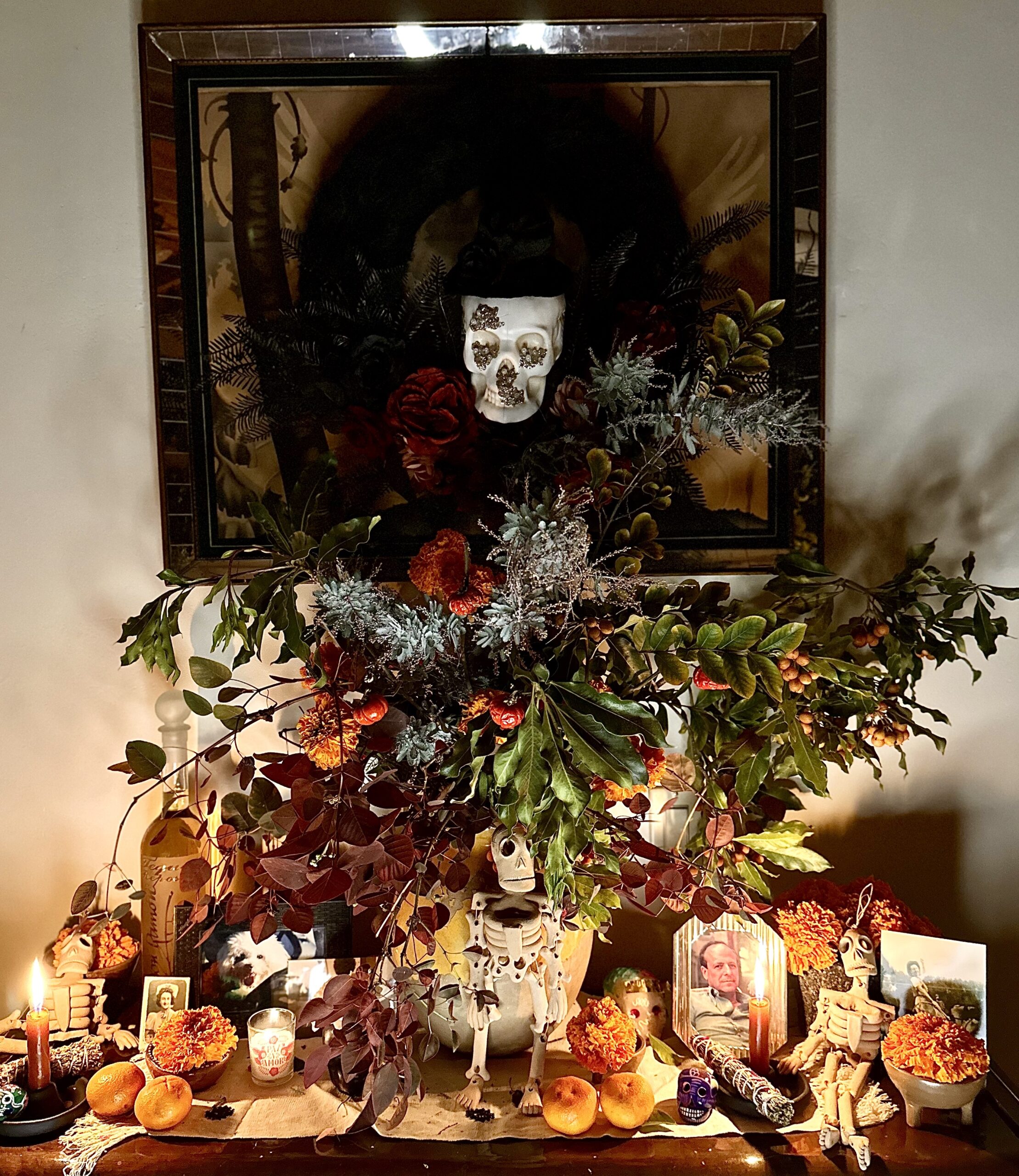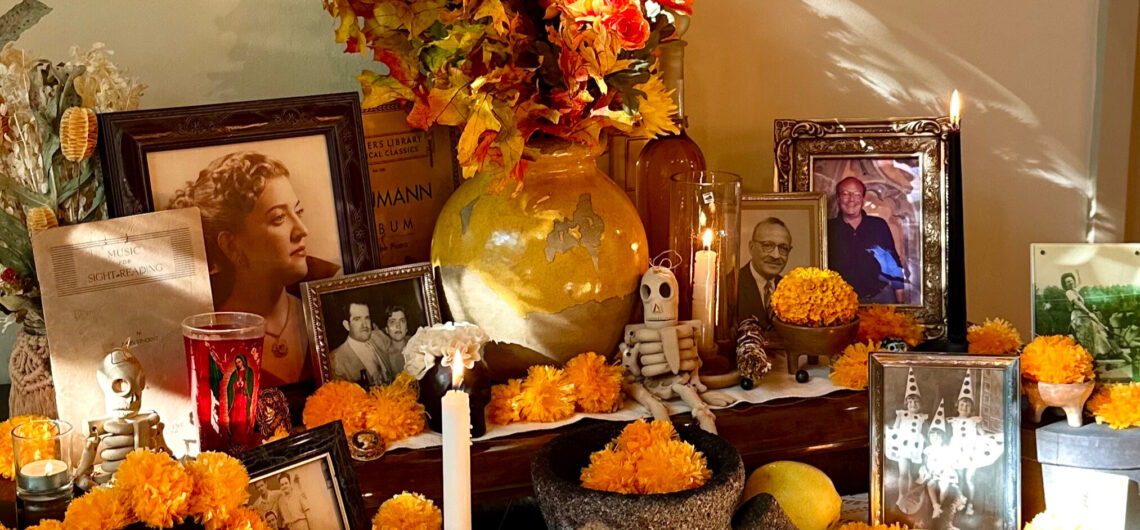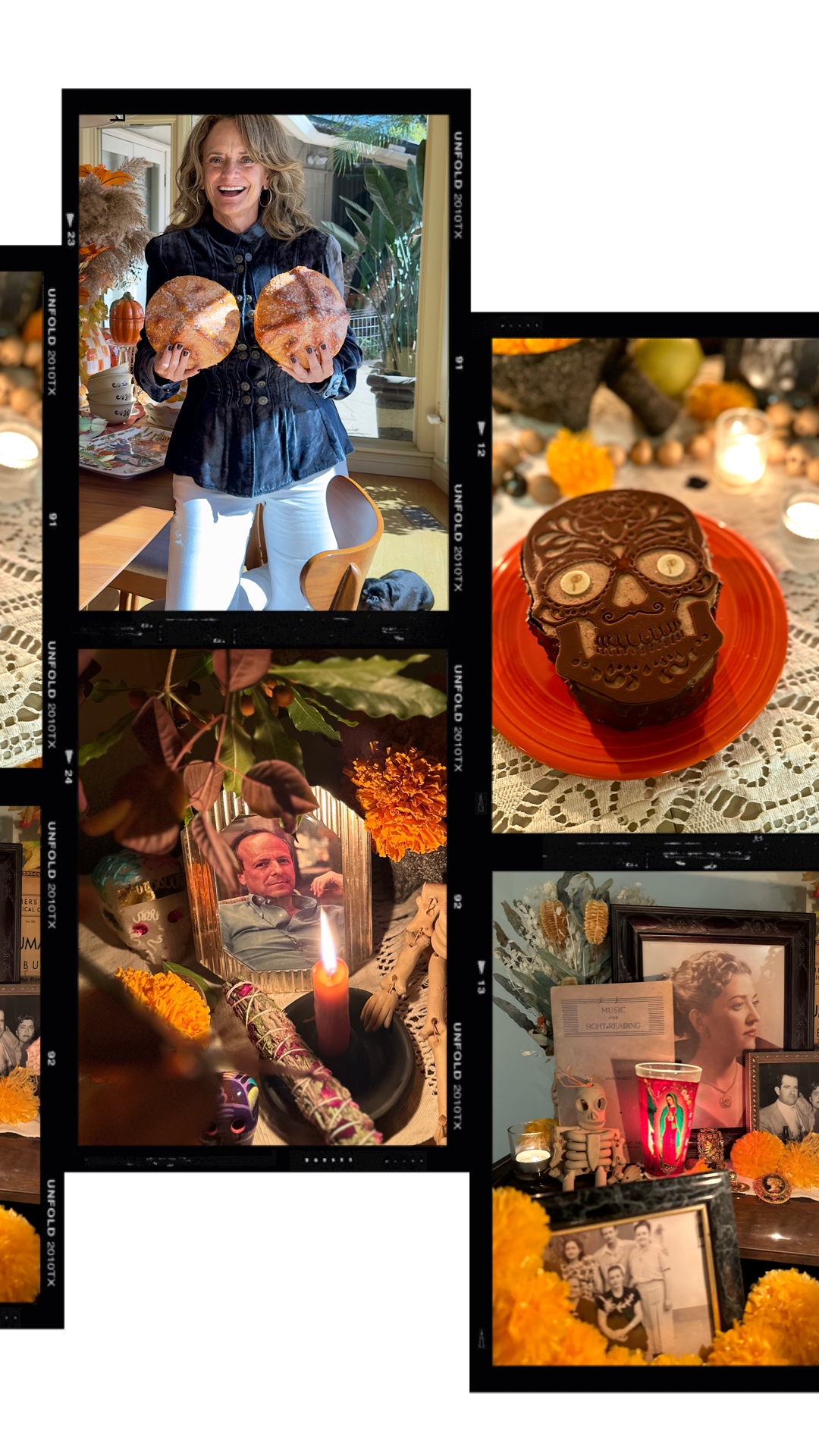One of Latin America’s unique traditions is Dia de los Muertos — Day of the Dead — celebrated on November 1st and 2nd.
It’s a time for families to honor and remember loved ones by creating ofrendas (altars) adorned with photos, candles, flowers, food and personal items of their departed.
Unlike Halloween, Dia de los Muertos is not about fear, but rather about celebrating life, love and memories.
Though it originates in Mexico, it’s also widely celebrated in Ecuador, Guatemala and El Salvador.
Over the years Dia de los Muertos gained popularity in the United States, particularly California, Texas, and Arizona because of the proximity to Mexico.
For my October and final Culture Trip, I learned how to create an ofrenda. It’s fun and simple. Here’s a step-by-step guide.

Choose a Location
Find a dedicated space in your house such as a table or shelf. I put mine on top of a credenza in the family room.
Decide if you want to have multiple levels — tiered shelves to place items — or just one level. Traditional alters have three. I place my items on one level.
If choosing numerous levels here are suggestions of what to place on each:
• The top level represents heaven, often holding religious symbols or images.
• The middle level represents the present and is where photos or items of the deceased are placed.
• The bottom tier represents the underworld and may include elements such as candles and food.
Add a tablecloth or papel picados. The later are vibrant colored banners traditionally made of tissue paper. These represent the fragility of life. I use a simple, cream color runner on my credenza and hang the colorful streamers along the back of the altar.
Decorate the Ofrenda
A central element of an altar are photos of deceased loved ones you are honoring. Place the photos around the surface. These can include those departed recently and from many years ago.
Pictures of beloved pets are also welcome.
Marigold flowers are one of the most characteristic elements on your altar. The bright color and distinctive scent are believed to guide loved ones’ spirits back home.
The tradition dates back to pre-Hispanic times of the Aztecs.
Real or artificial marigolds are used. If you’ll have the altar up for awhile, I suggest using plastic flowers. Or a combination.
No celebration in Mexico comes without delicious customary food. Pan de muerto is one of those and practically mandatory on ofrendas.
There are several kinds of this sweet bread, but the round version with bone-shaped pieces of dough on top is the most popular. It’s thought to nourish the souls of those who’ve passed on. If you have a Mexican market in your town, they will sell this bread.
Along with the bread, put the deceased favorite foods and drinks on the altar the day of Dia de los Muertos.
A cup of water placed anywhere on the ofrenda symbolizes purity and quenching the spirits’ thirst.
Decorate with objects the deceased loved. My mother-in-law adored jewelry and classical music. I put her favorite pins and earrings, as well as music books beside her photo.
Candles of different sizes light your alter beautifully. I use tea lights, pillars, and decorative illumination.
Sugar skulls — calaveras — are iconic to Dia de los Muertos ofrendas. Place one for each person to whom the altar is dedicated.
Calaveras represent the joy of life and the cycle of death and rebirth.
Adding other mementos will personalize your ofrenda, guiding the souls of your dearly departed back to the world of the living. Whether simple or elaborate, each element of your altar reflects love, remembrance, and the enduring bond between the living and the departed.
Related Posts:
Culture Trip: Twelve Countries, Twelve Traditions.



Comments